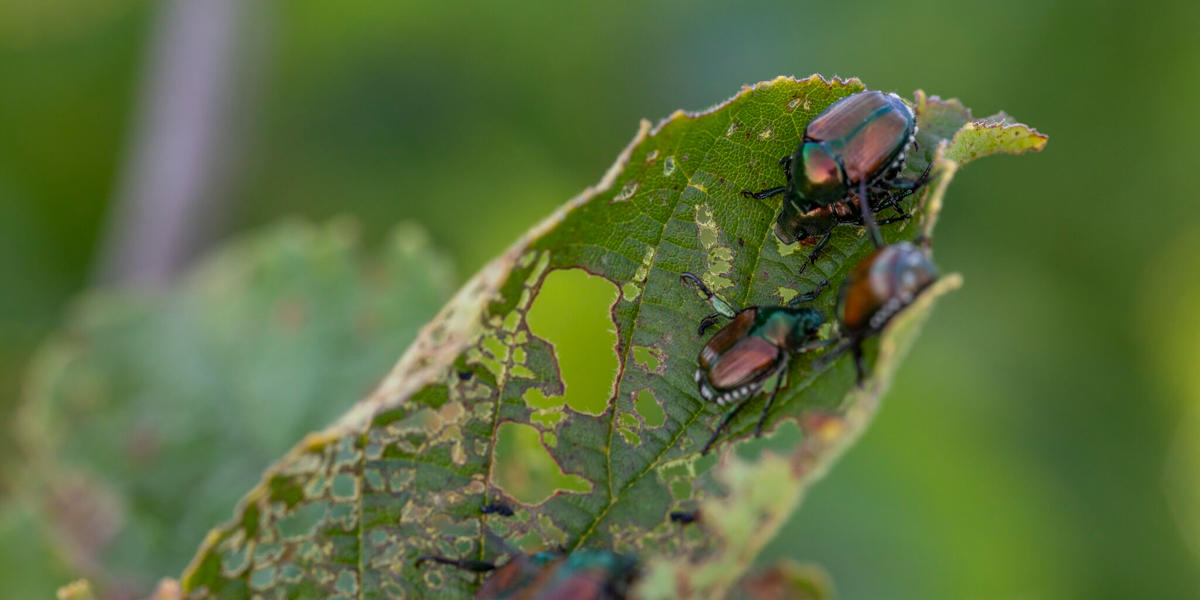
Japanese beetles feed on hazelnut. Image credit: Dylan VanBoxtel.
Background
Japanese beetles (Popillia japonica) have been present in Minnesota for decades, but due to atypical weather patterns in recent years, the populations have dramatically increased and expanded. The pest feeds on over 300 species of plants and flowers, has few natural enemies, and is estimated to cost over $450 million annually for control and replacement.
Japanese beetle management in the United States—through quarantines, hand removal, biocontrol agents, traps, and insecticides—has been difficult and unsuccessful, as well as harmful to pollinators. The current control methods are largely ineffective and not sustainable.
People have observed that some plants have naturally-occurring compounds that appear to be resistant to Japanese beetle feeding. This includes multiple plant genera such as birch, apple, grape, plum, and raspberry. Further investigation will allow researchers to identify what specific compounds are resistant to feeding.
Research questions
- What botanical extracts deter Japanese beetle feeding? What are the bioactive components?
- How do those extracts affect Japanese beetle feeding in field trials?
What additional species and cultivars are resistant to Japanese beetles? - Based on results and new foliar sprays containing Japanese-beetle-resistant compounds, what is the best commercialization strategy?
Practical implications
Researchers plan to develop new foliar sprays using host plant resistant compounds, which could lead to less damaging and more effective control measures for Japanese beetles. This will provide immediate protection for cultivars that are naturally susceptible.
Outcomes
This project began in January 2024 and is in progress for the next several years. Please check back at a later time for updates.
To stay connected, sign up for the MITPPC newsletter and follow us on Facebook and LinkedIn.